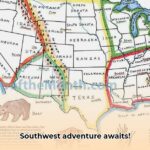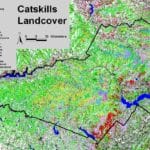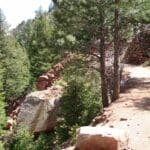New Mexico’s mountains are a landscape of exceptional beauty! The state boasts diverse environments to explore, from snow-capped peaks to dramatic rocky ranges. For a broader view of the region, check out this map of the Southwest. Whether you’re an experienced climber or simply enjoying hiking trails, this guide provides valuable information for planning your adventure. Discover the best hiking and climbing spots, vital safety tips, and practices to help preserve these incredible mountains for generations. Prepare to uncover the beauty and challenges of New Mexico’s high country!
New Mexico Mountain Adventures: Hiking & Climbing Hotspots
New Mexico’s mountains are more than just scenic backdrops; they’re a diverse playground waiting for exploration. From towering peaks to valleys filled with wildflowers, these ranges offer adventures for everyone, whether you’re a seasoned climber or a weekend hiker. Let’s delve into the heart of these landscapes and find your next adventure.
Majestic Mountain Ranges of New Mexico: Exploring Natural Wonders
New Mexico features several stunning mountain ranges, each with a distinct character. Let’s explore some of the most popular:
-
Sangre de Cristo Mountains: Envision dramatic peaks, deep canyons, and dense forests. This range, meaning “Blood of Christ” in Spanish, likely earned its name from the fiery sunsets that paint its rugged slopes. It’s home to some of the state’s highest points, providing challenging climbs and breathtaking views. Imagine standing on a summit, gazing at a panoramic view of the vast landscape below. The range stretches from south-central Colorado into northern New Mexico, offering hundreds of miles of trails and wilderness areas.
-
Santa Fe Mountains: Nestled near the state’s capital, these mountains offer an accessible, yet equally rewarding hiking and climbing experience. Known for scenic trails and diverse plant life, they are a popular destination for outdoor enthusiasts. Picture yourself hiking through pine forests, pausing to admire vibrant wildflowers along the trail. The Aspen Vista Trail is a particular favorite, known for its stunning fall colors.
-
Jemez Mountains: These mountains are a vast playground for outdoor lovers, with an incredible array of activities to enjoy. Explore hiking and nature trails, try fly fishing, or discover the pristine beauty of public lands like the Valles Caldera National Preserve and Bandelier National Monument.
-
Sacramento Mountains: Located in southern New Mexico, the Sacramento Mountains offer a unique alpine experience amidst the desert landscape. Notable features include the Lincoln National Forest and the scenic Rim Road, providing panoramic views.
These remarkable mountain ranges make New Mexico a special place for outdoor enthusiasts. Each range offers unique allure and presents different challenges and rewards, based on experience and goals.
Conquering New Mexico’s Peaks: Trails, Altitude, and Safety
Wheeler Peak, at 13,161 feet, is New Mexico’s highest mountain, offering a challenging climb for experienced mountaineers. However, many other peaks offer fulfilling climbs for hikers of all skill levels.
Here’s a look at some prominent peaks and their relative difficulty:
| Peak | Approximate Elevation (ft) | Difficulty Level | Trail Conditions | Potential Hazards |
|---|---|---|---|---|
| Wheeler Peak | 13,161 | Expert | Rugged, steep, often snowy | Severe altitude sickness, unpredictable weather, exposure, avalanche danger in winter |
| Truchas Peak | \~13,100 | Strenuous | Varied, some sections challenging | Steep drops, changing weather, possible altitude issues, rockfall |
| Big Costilla Peak | \~12,800 | Moderate to Strenuous | Well-maintained in sections, some rugged parts | Altitude sickness, weather changes, rocky terrain, exposure to the elements |
| Mount Taylor | 11,301 | Moderate | Well-defined trail | Lightning strikes (especially during monsoon season), exposure to sun, potential for encounters with wildlife |
Important Note: Before any climb, research the trail, check the weather forecast (New Mexico weather can change rapidly!), and inform someone of your plans. Altitude sickness is a real concern at these elevations; learn the symptoms and take precautions. Essential gear and physical preparedness are key to a safe and enjoyable experience. Carry plenty of water, wear appropriate clothing, and be aware of wildlife.
Beyond the Summits: Recreational Activities & Mountain Tourism
Climbing isn’t the only activity available. New Mexico mountains offer abundant recreational opportunities for all interests. Consider these options:
-
Hiking: Trails for all fitness levels wind through forests, meadows, and alongside streams.
-
Backpacking: Spend days immersed in nature, carrying everything you need on your back.
-
Wildlife Viewing: Observe elk, deer, bears, and diverse bird species.
-
Photography: Capture the interplay of light and shadow, textures, and the sheer scale of the landscape.
-
Skiing and Snowboarding: Several ski resorts operate in the mountains of New Mexico, offering winter sports opportunities for all skill levels. Resorts like Taos Ski Valley and Ski Santa Fe are popular destinations.
-
Mountain Biking: Many trails are open to mountain biking, providing thrilling rides through scenic terrain.
These activities significantly boost New Mexico’s economy, supporting local communities through tourism and related industries.
Protecting Mountain Treasures: Conservation & Responsible Recreation
Preserving these landscapes is vital as they face ongoing challenges. Actions taken today impact these ecosystems for years.
Challenges:
-
Trail erosion: Increased foot traffic can damage trails, leading to erosion and habitat destruction. Sustainable trail planning and maintenance are essential.
-
Wildfires: Droughts and climate change increase the risk of devastating wildfires.
-
Climate change: Changes in temperature and precipitation patterns affect ecosystems, vegetation, and water resources in the mountains.
-
Mining and Resource Extraction: Potential conflicts arise between conservation efforts and the extraction of natural resources.
What Can You Do?
Even small actions make a difference. Practice “Leave No Trace” principles: pack out everything you pack in, stay on marked trails, and respect wildlife by observing from a safe distance. Volunteer with organizations that maintain trails and restore habitats. Support businesses that prioritize sustainability.
Resources and Further Information for Planning Your Visit
Planning a trip? Here are some helpful resources to get you started:
-
New Mexico State Parks website: Find information about permits, regulations, and camping reservations in state parks located within the mountains.
-
AllTrails and other trail apps: Access trail maps, user reviews, current conditions, and more.
-
Local outdoor gear shops: These shops often have up-to-date trail conditions and information on local regulations. They can also provide gear recommendations and safety advice.
-
U.S. Forest Service: Provides information on trails, camping, and permits within National Forests.
New Mexico’s mountains are an invitation to explore. Discover majestic peaks, hidden trails, and create unforgettable memories. Remember to respect the environment and leave no trace behind.
Assessing Prominence of Undiscovered Mountain Peaks in New Mexico
Key Takeaways:
- New Mexico’s diverse mountain ranges offer hiking and climbing opportunities, from popular peaks to lesser-explored gems.
- Determining a peak’s prominence requires understanding its height relative to surrounding terrain and how it stands apart from other peaks.
- Reliable data sources from organizations like the USGS are crucial for accurate assessment.
- Exploring lesser-known peaks presents challenges and rewards, demanding thorough preparation and navigation skills.
- Sustainable practices are essential for preserving New Mexico’s mountain ecosystems for future generations.
New Mexico’s Majestic Mountain Ranges: A Landscape Overview
New Mexico’s diverse landscape is sculpted by magnificent mountain ranges. The Sangre de Cristos, home to giants like Wheeler Peak, dominate the northern part of the state. The Santa Fe Mountains, near the capital city, are ideal for beginner and intermediate hikers. The Culebra Range presents a less-traveled, more rugged challenge. Each range boasts unique flora, fauna, and distinctive geological formations. Which mountains will you choose to explore first?
Key Peaks and Climbing Considerations: Understanding Key Factors
Wheeler Peak (13,161 feet) is the undisputed highest point in New Mexico. However, prominence – a peak’s height above its surrounding terrain – is another essential factor in assessing a mountain’s significance. Understanding how to determine the prominence of lesser-known peaks requires specific knowledge and tools. Consider Truchas Peak; while not quite as high as Wheeler, its prominence contributes to its notability and the challenging nature of its ascent.
| Peak | Elevation (ft) | Prominence (ft) | Difficulty | Notes |
|---|---|---|---|---|
| Wheeler Peak | 13,161 | 6,029 | Expert | Highest point in New Mexico, significant vertical rise from the surrounding area |
| Truchas Peak | 13,102 | 3,582 | Strenuous | Demanding ascent, well-regarded for its views and challenging terrain |
| Big Costilla Peak | 12,630 | 3,143 | Moderate-Strenuous | Beautiful views, relatively accessible, but still requires good physical fitness |
Trail conditions can change
















1 thought on “Discover New Mexico Mountains: Hiking & Climbing Guide”
Comments are closed.